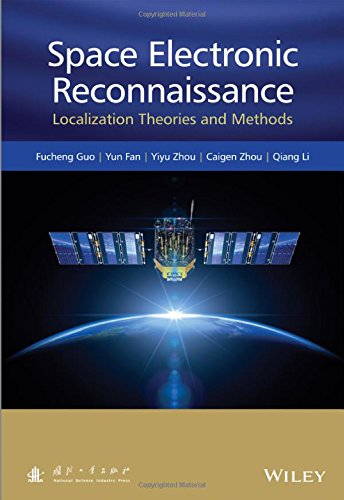

Most ebook files are in PDF format, so you can easily read them using various software such as Foxit Reader or directly on the Google Chrome browser.
Some ebook files are released by publishers in other formats such as .awz, .mobi, .epub, .fb2, etc. You may need to install specific software to read these formats on mobile/PC, such as Calibre.
Please read the tutorial at this link: https://ebookbell.com/faq
We offer FREE conversion to the popular formats you request; however, this may take some time. Therefore, right after payment, please email us, and we will try to provide the service as quickly as possible.
For some exceptional file formats or broken links (if any), please refrain from opening any disputes. Instead, email us first, and we will try to assist within a maximum of 6 hours.
EbookBell Team

4.0
76 reviewsPresents the theories and applications of determining the position of an object in space through the use of satellites
As the importance of space reconnaissance technology intensifies, more and more countries are investing money in building their own space reconnaissance satellites. Due to the secrecy and sensitivity of the operations, it is hard to find published papers and journals on the topic outside of military and governmental agencies. This book aims to fill the gap by presenting the various applications and basic principles of a very modern technology. The space electronic reconnaissance system in mono/multi-satellite platforms is a critical feature which can be used for detection, localization, tracking or identification of the various kinds of signal sources from radar, communication or navigation systems. Localization technology in space electronic reconnaissance uses single or multiple satellite receivers which receive signals from radar, communication and navigation emitters in the ground, ocean and space to specify the location of emitter. The methods, principles and technologies of different space electronic reconnaissance localization systems are introduced in this book, as are their performances, and the various methods are explained and analysed. Digital simulations illustrate the results. * Presents the theories and applications of determining the position of an object in space through the use of satellites * Introduces methods, principles and technologies of localization and tracking in the space electronic reconnaissance system, the localization algorithm and error in satellite system and near space platform system, and the tracking algorithm and error in single satellite-to-satellite tracking system * Provides the fundamentals, the mathematics, the limitations, the measurements, and systems, of localization with emphasis on defence industry applications
Highly relevant for Engineers working in avionics, radar, communication, navigation and electronic warfare. Chapters include:- the introduction of space electronic reconnaissance localization technology, knowledge about the satellite orbit and basic terminology of passive localization, single satellite geolocation technology based on direction finding, three-satellite geolocation technology based on time difference of arrival (TDOA), two-satellite geolocation technology based on TDOA and frequency difference of arrival (FDOA), the single satellite localization technology based on kinematics theory, localization principles of near-space platform electronic reconnaissance systems, the orbit determination of single satellite-to-satellite tracking using bearings only(BO) information, the orbit determination of single satellite-to-satellite tracking using bearings and frequency information, the orbit determination of single satellite-to-satellite tracking using frequency only(FO) information. Each chapter ends with a problem and solution section, some using Matlab code.